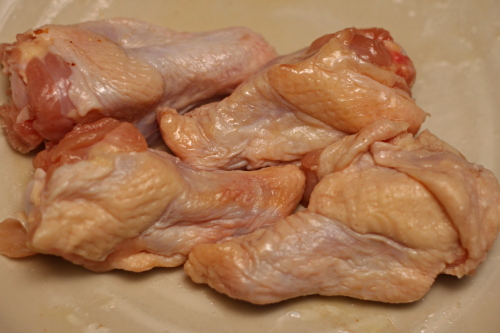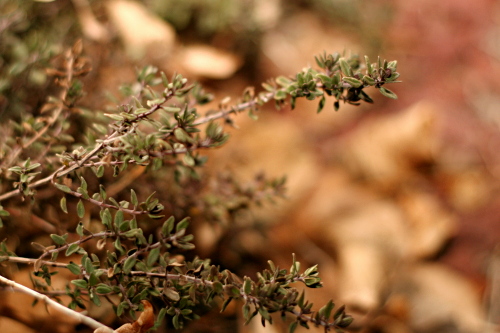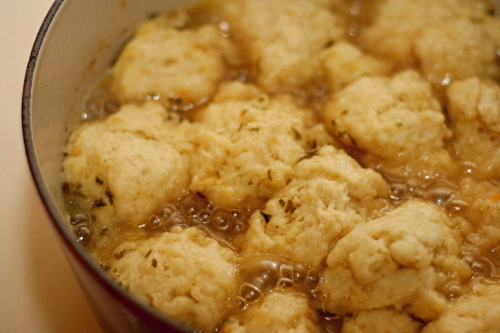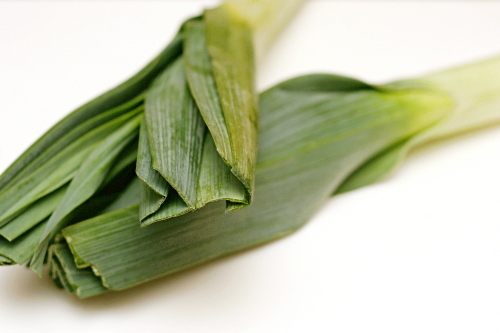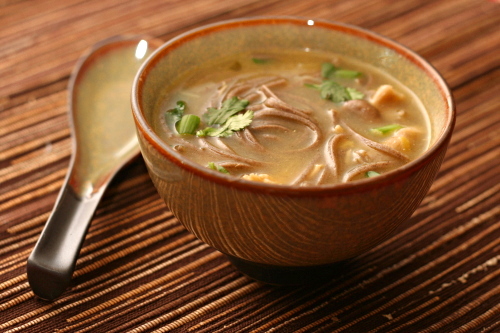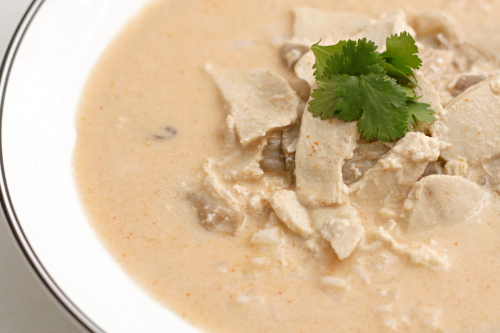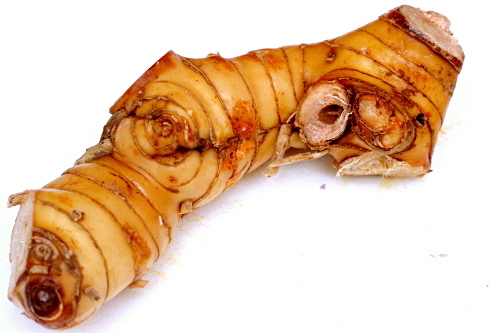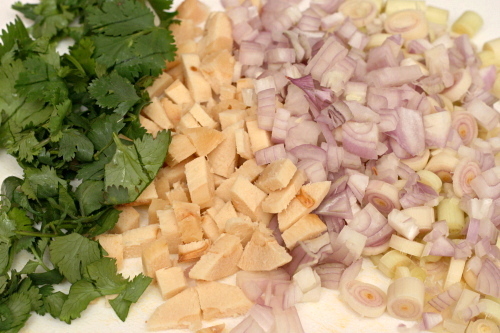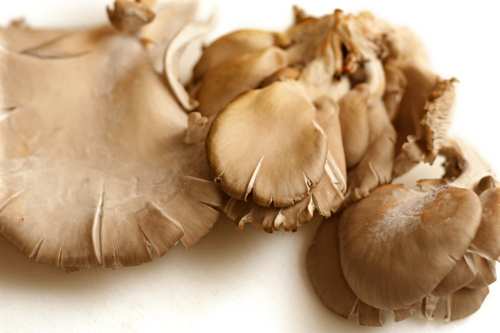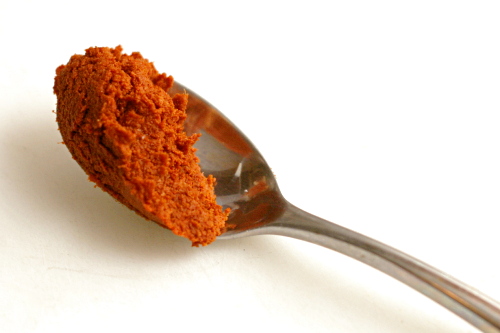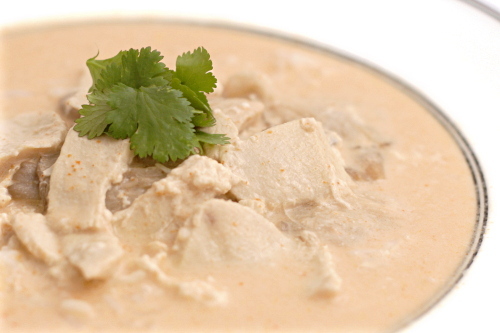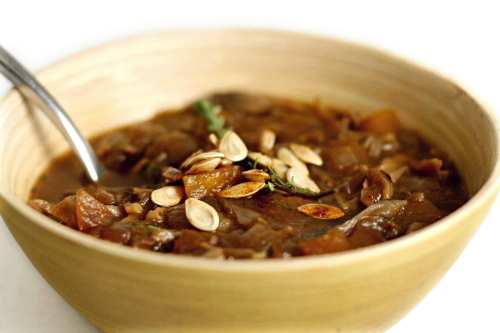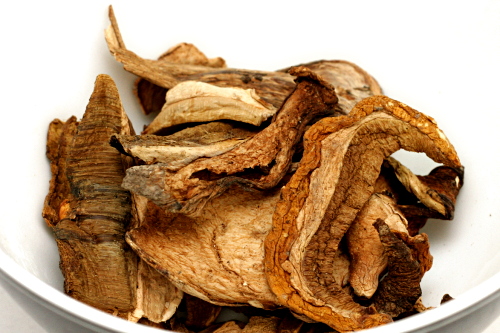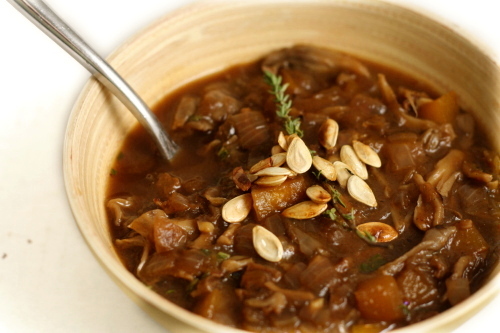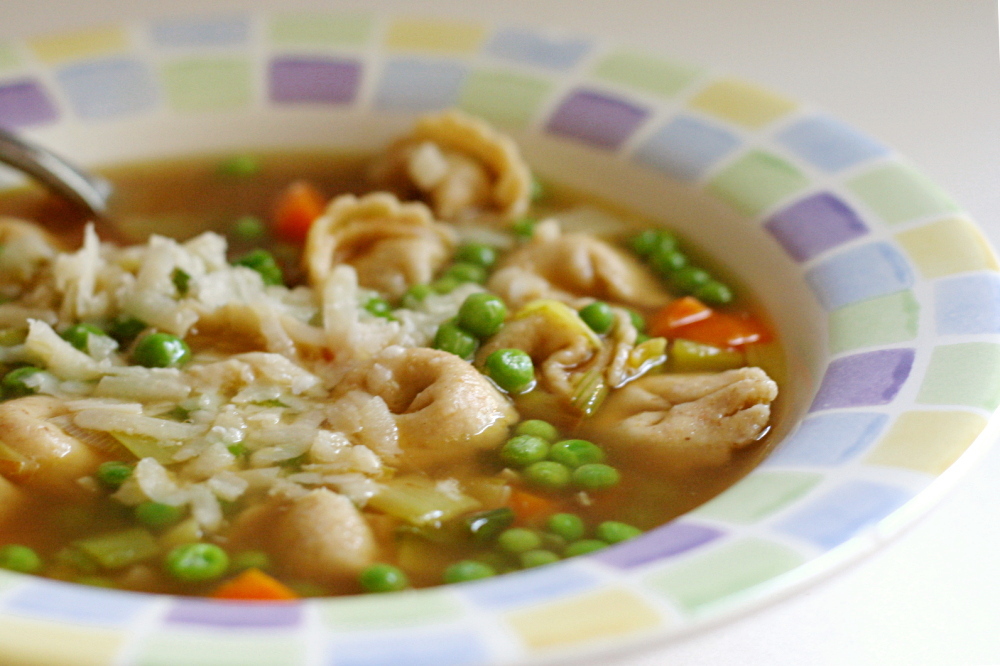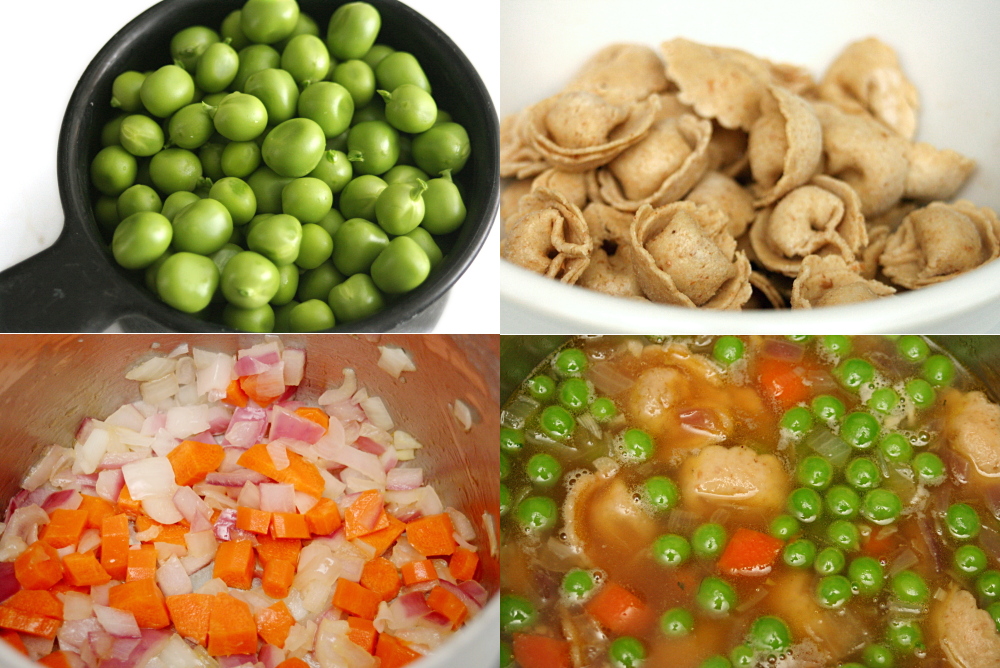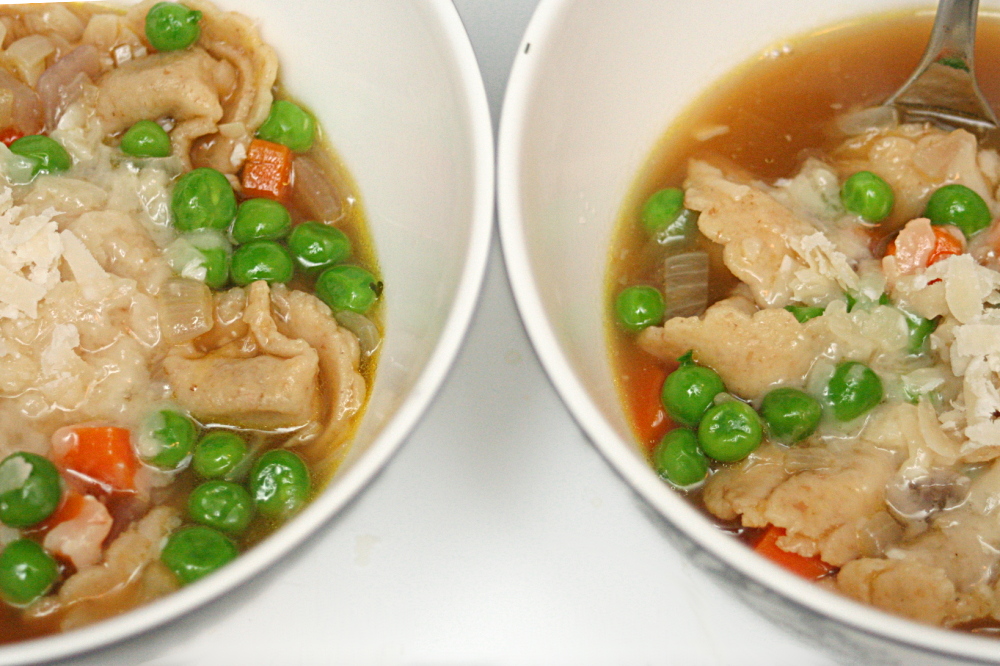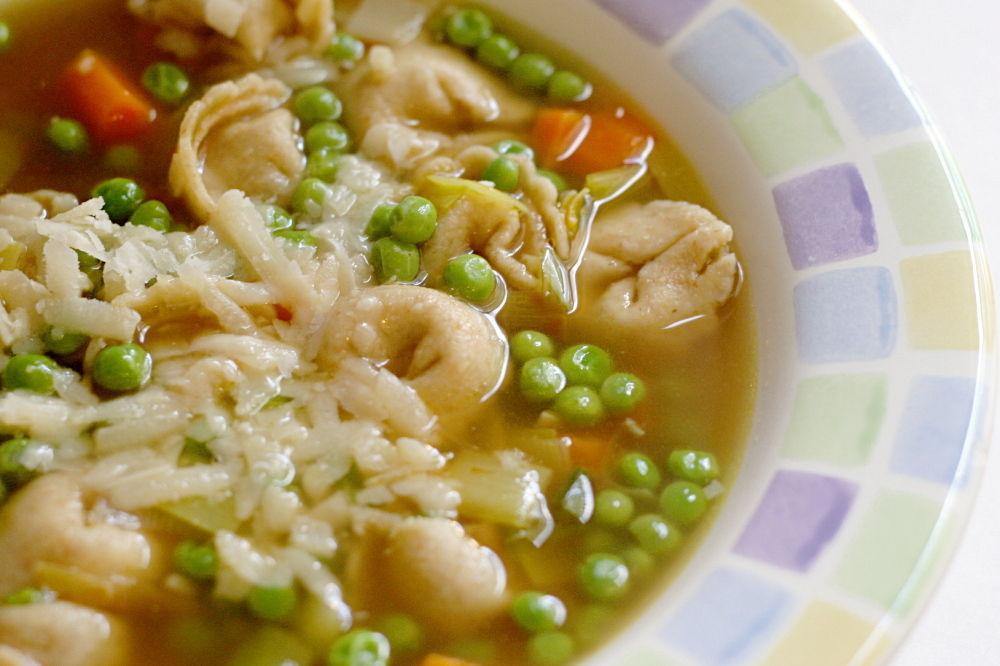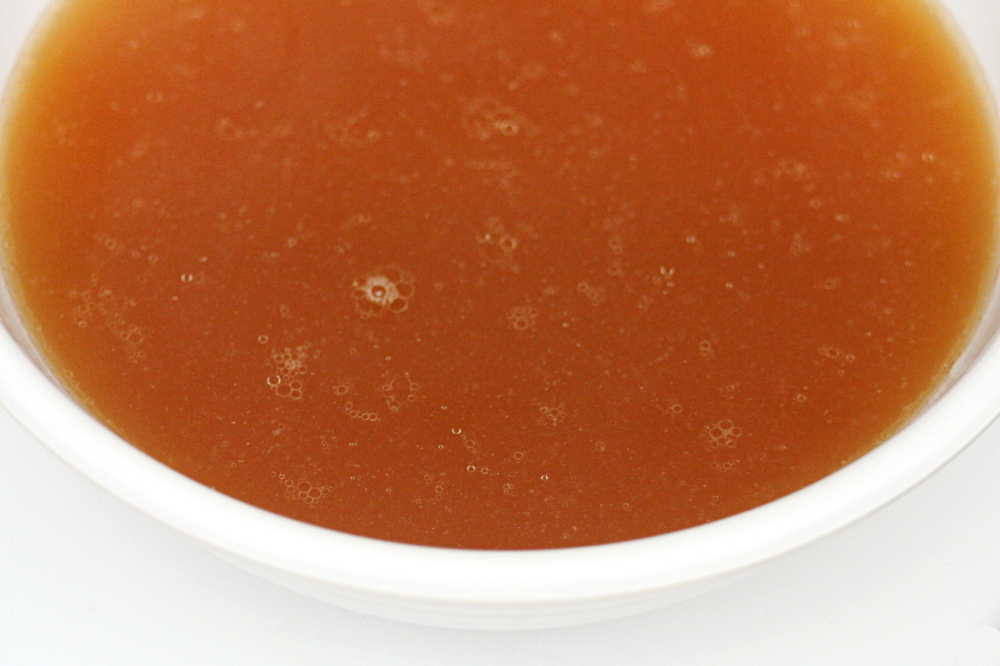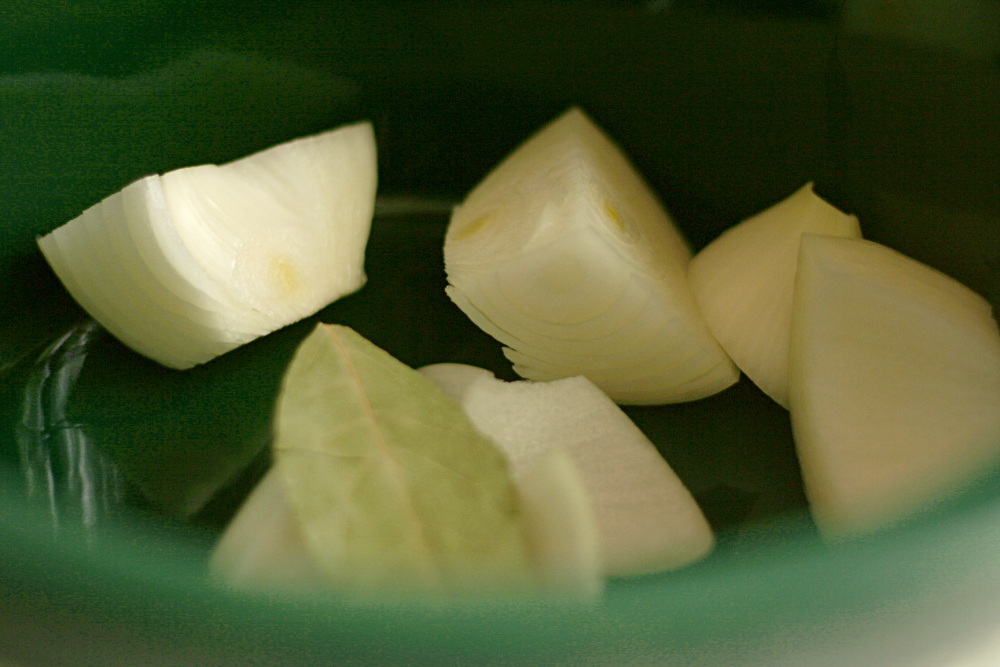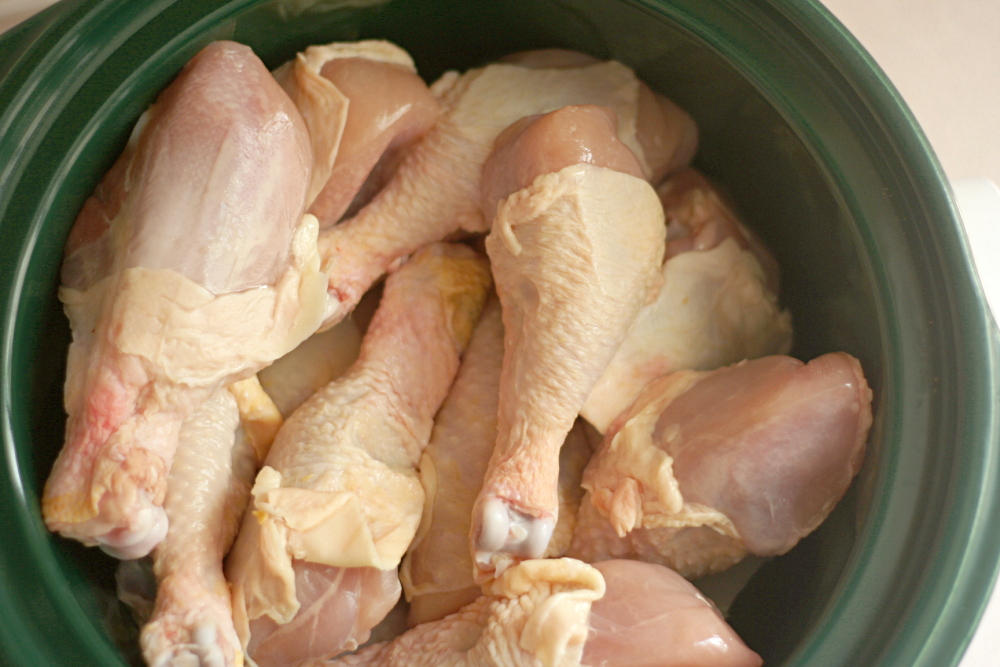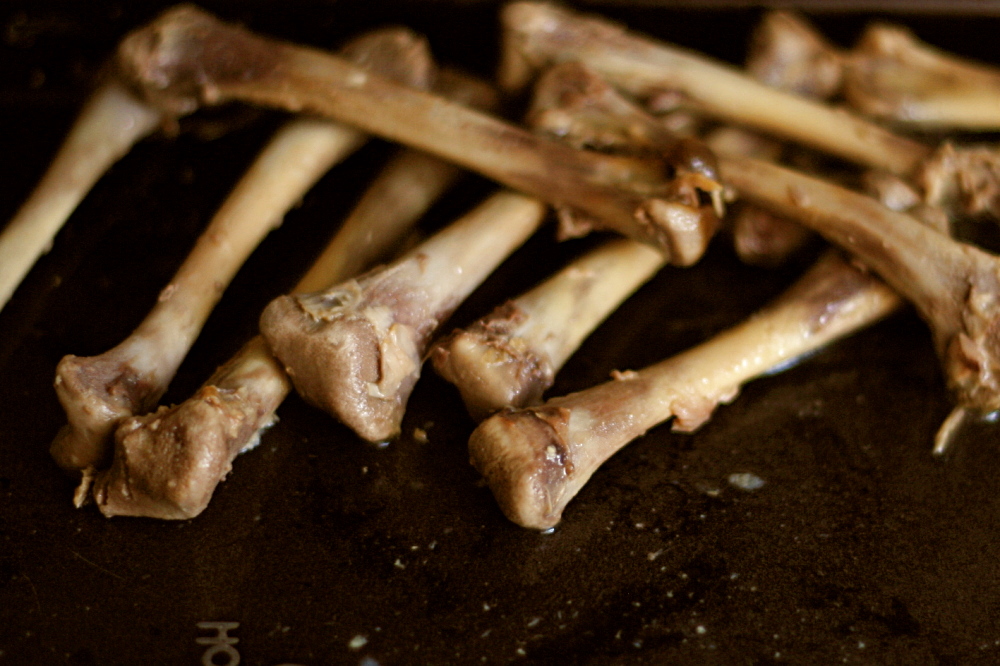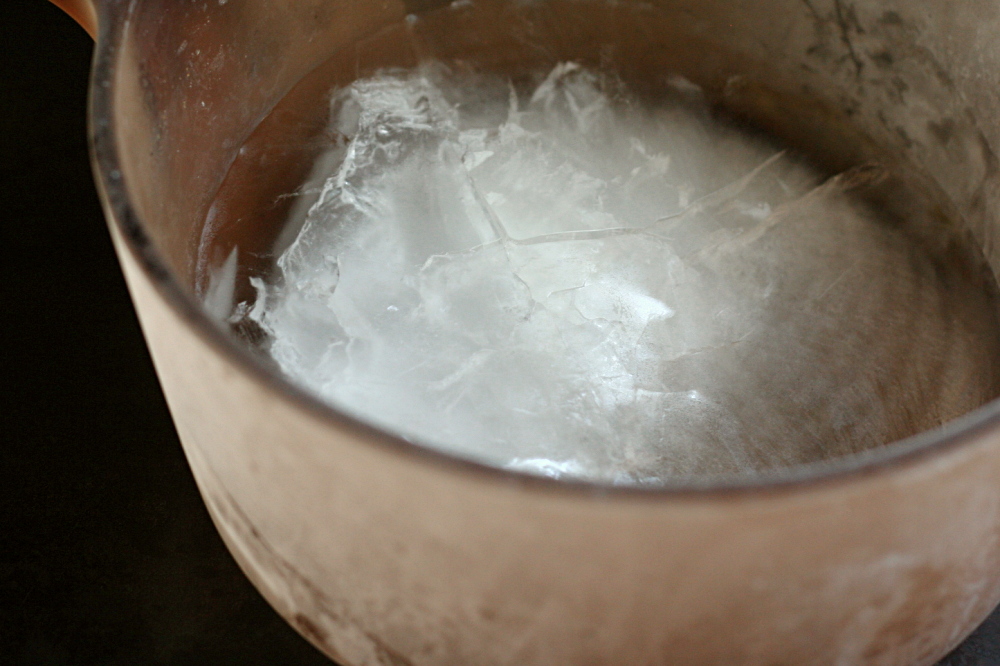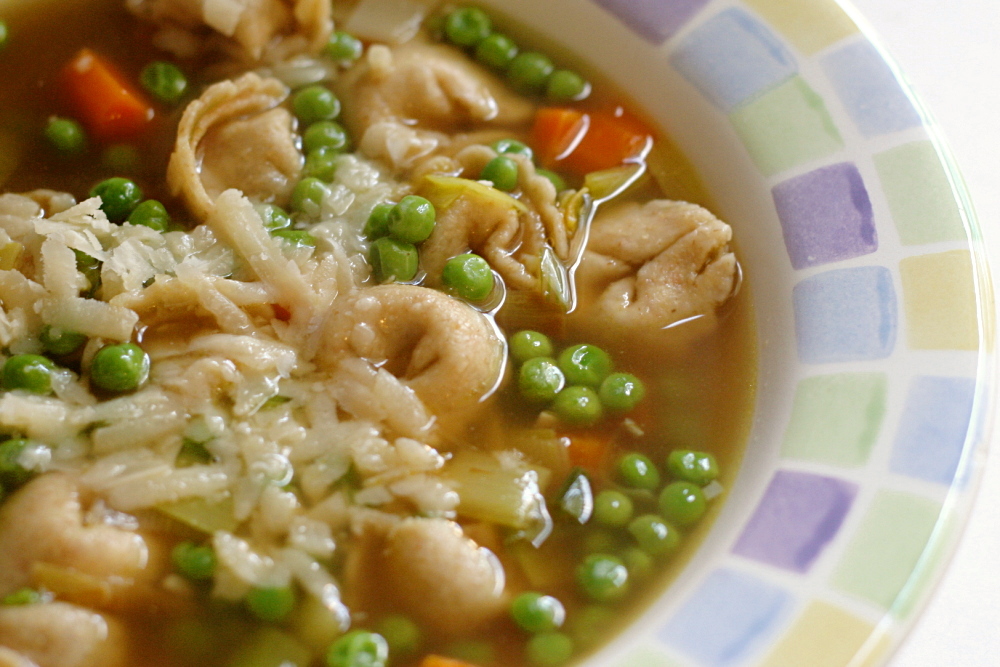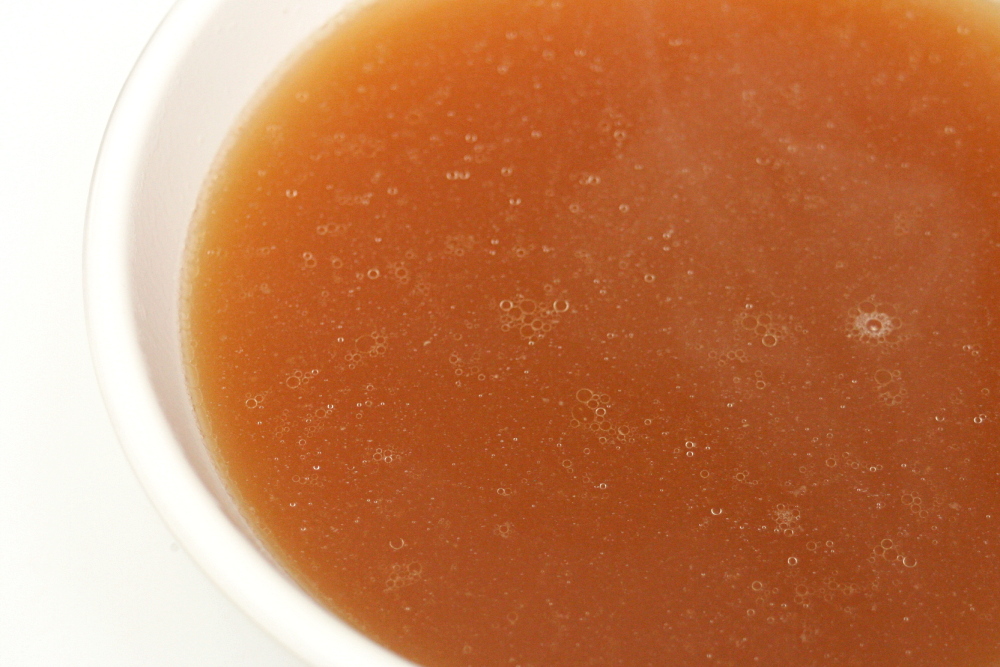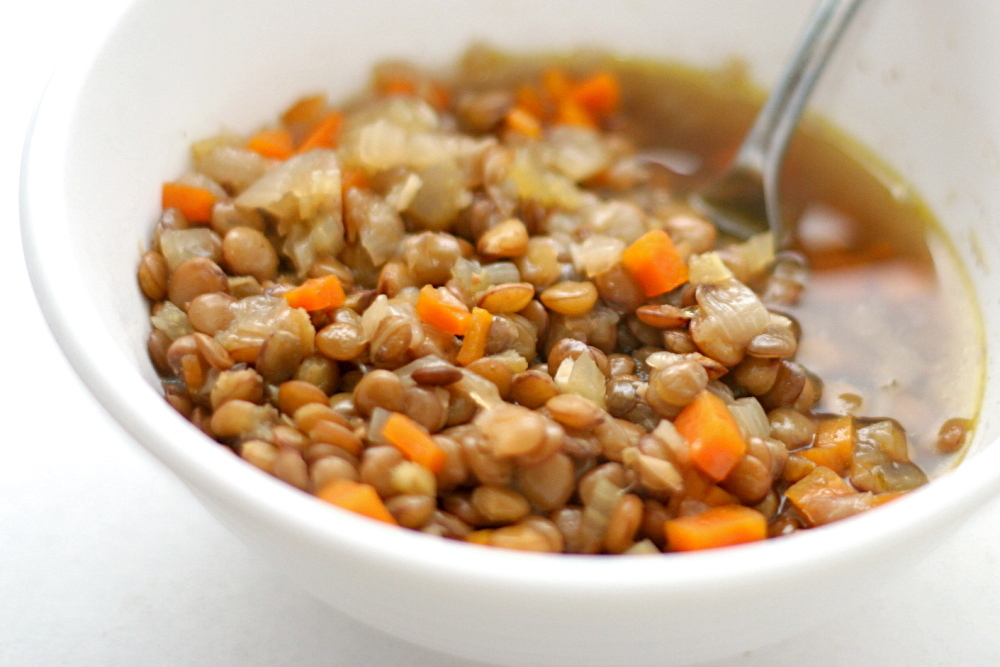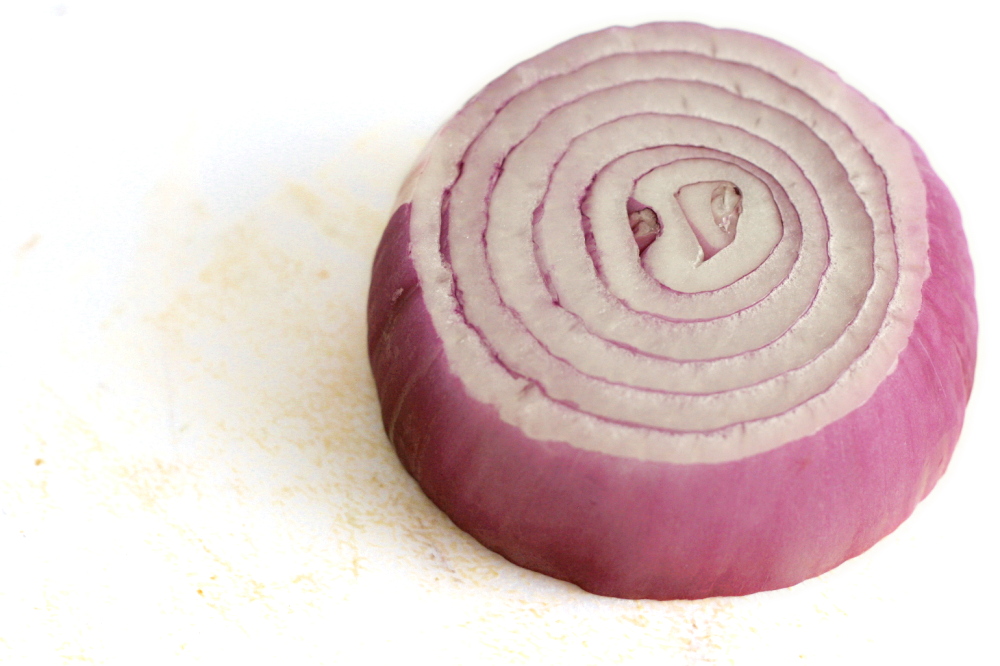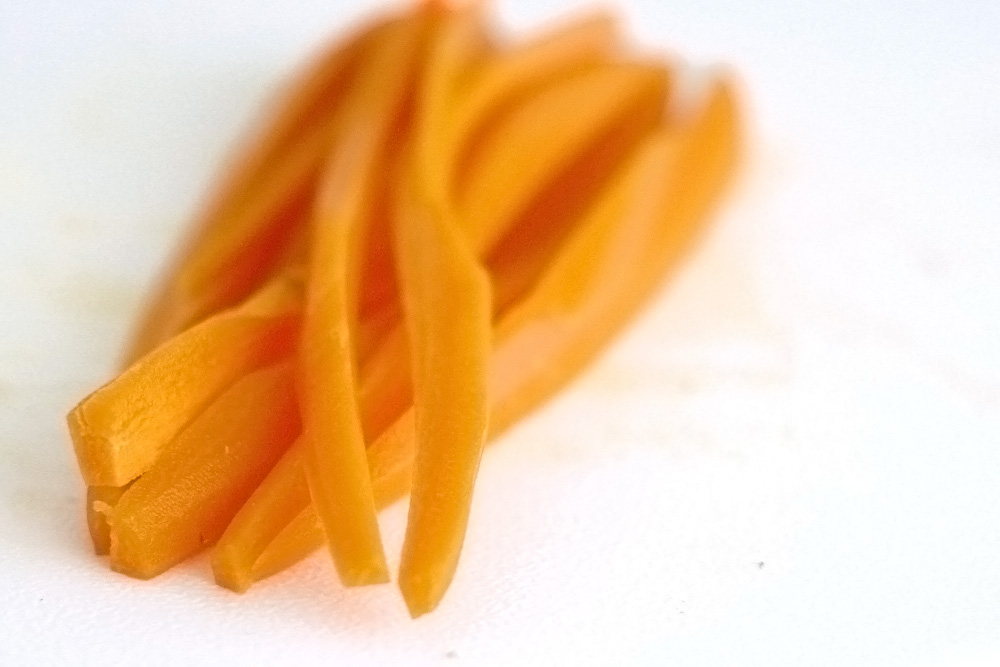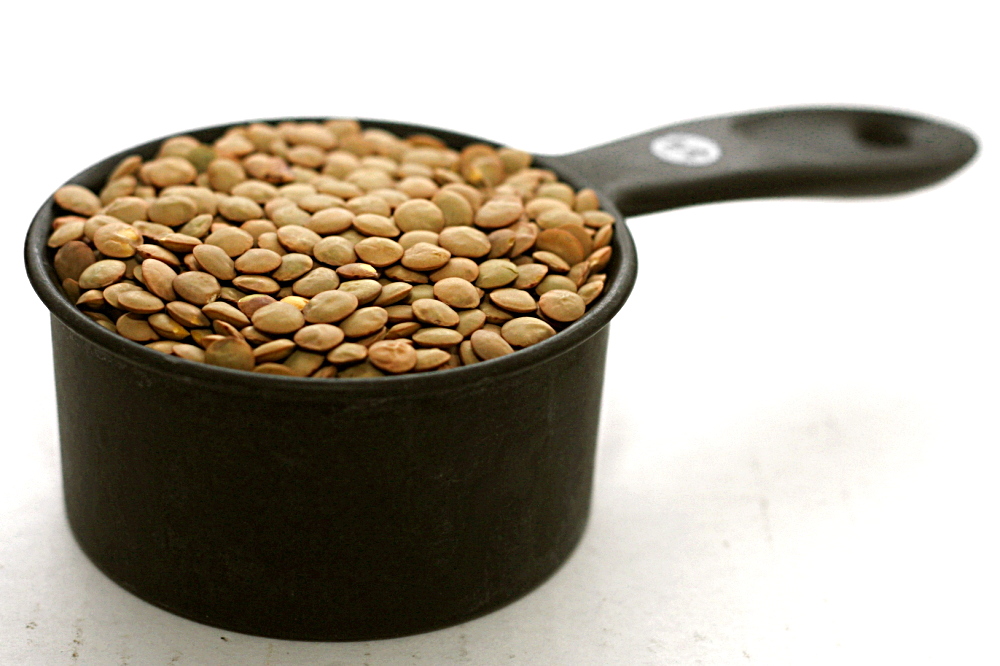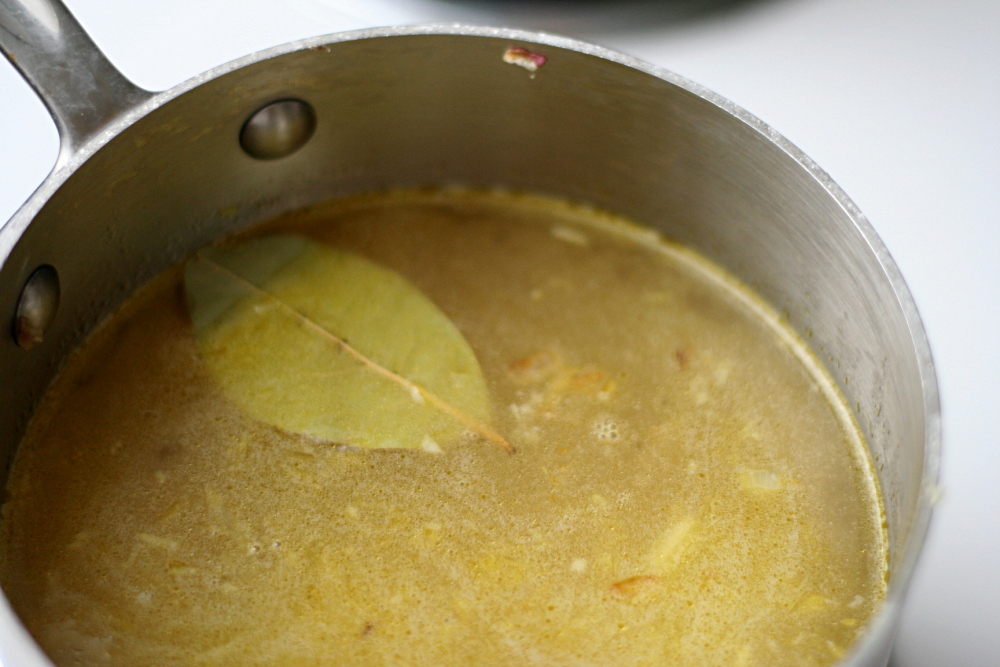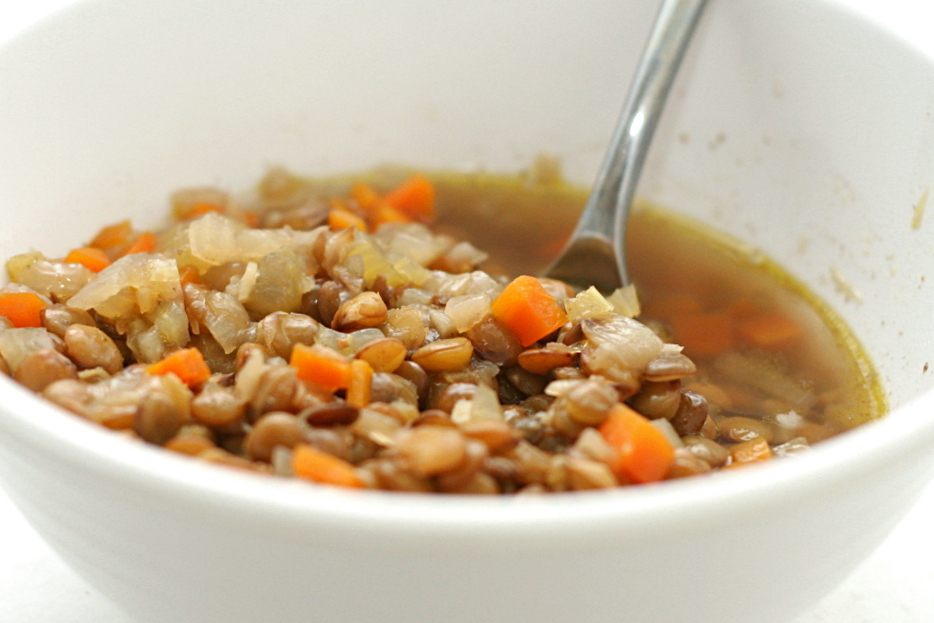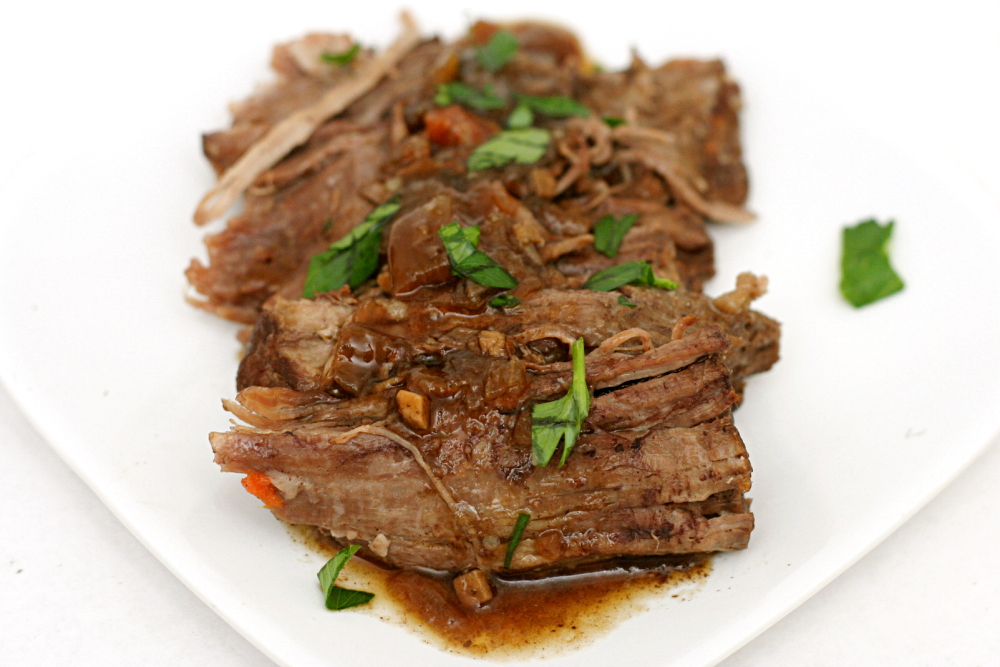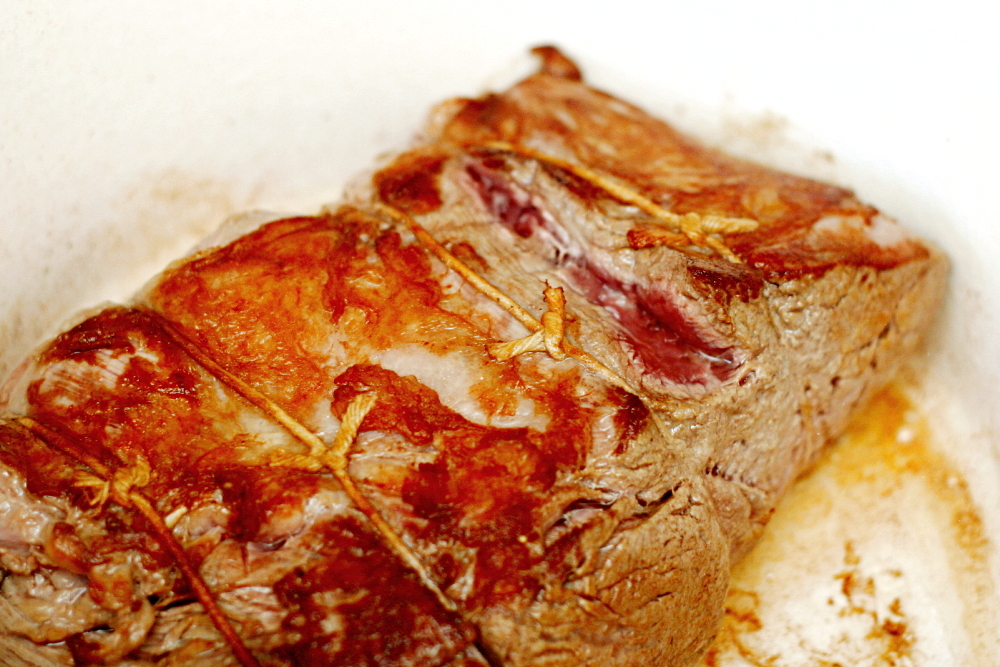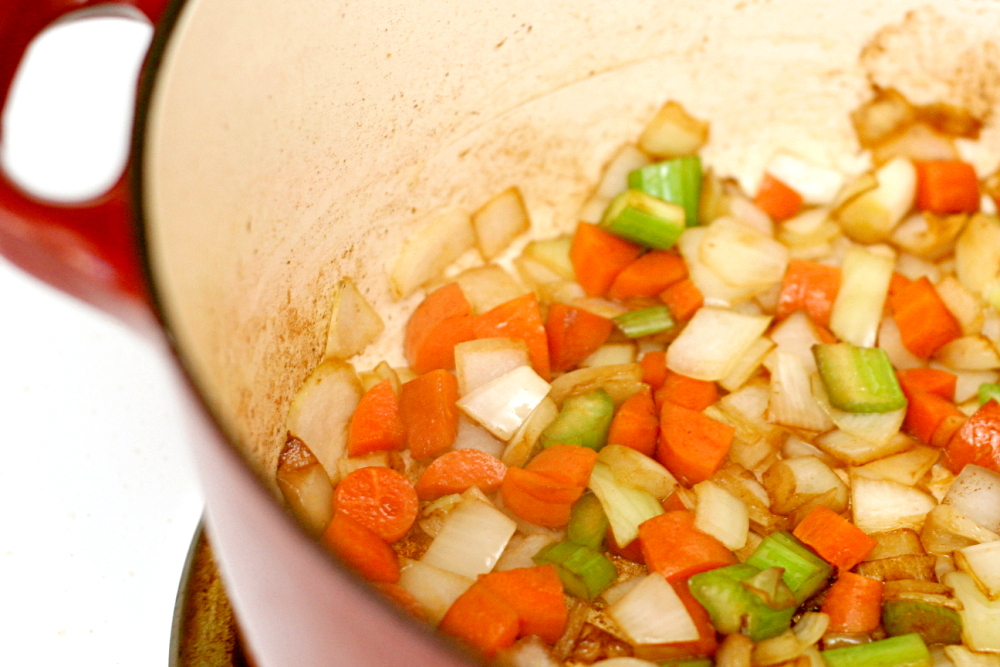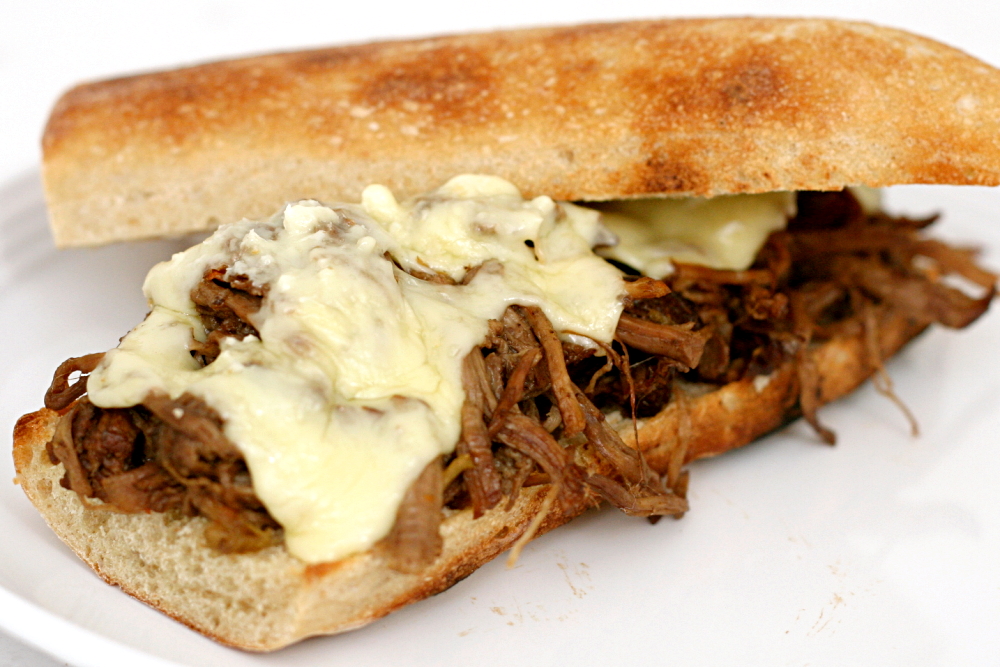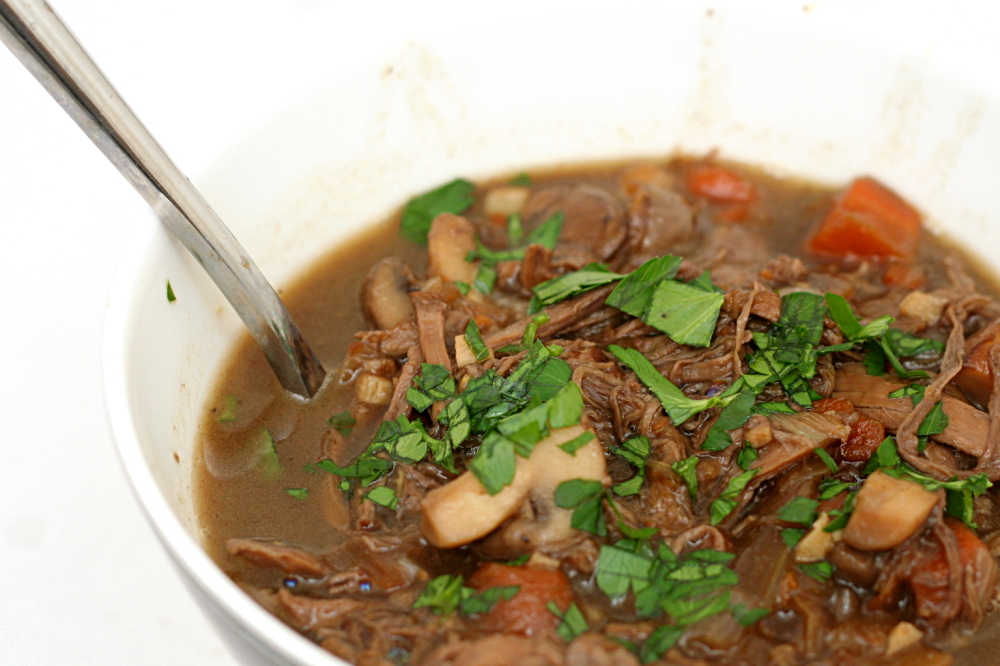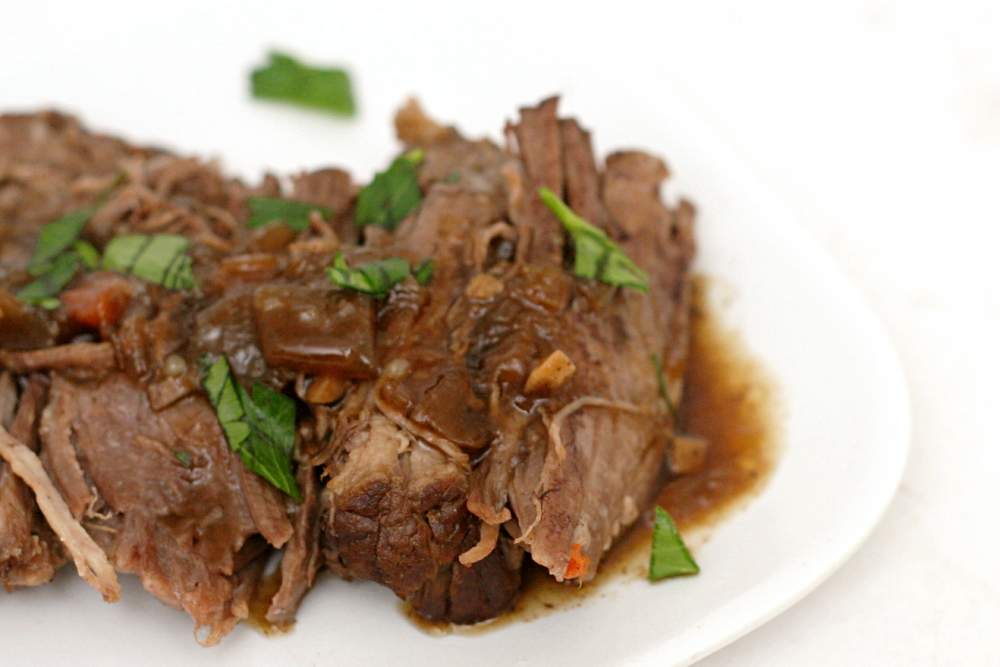Aargh, I hate when I choose a recipe specifically because of one step that I find interesting, and then I screw up that step! In this chicken and dumplings recipe, Cooks Illustrated uses chicken wings to thicken the broth, instead of starch. I’m always fascinated by how homemade stock is gelatinous when it’s cold, so I was eager to try out the idea of thickening a broth with natural collagen.
But then I didn’t quite buy chicken wings. Drummettes were more easily available, and they’re from wings, so I figured it was close enough. Too late, I read the recipe description closer and saw that they specifically refer to the joints in wings as having a lot of collagen. D’oh! My little drummettes didn’t have joints.
So much for that trick. I ended up dissolving about 2 tablespoons of cornstarch in about ¼ cup of water and stirring that into the broth near the end of cooking. That worked fine, although it wasn’t as fun.
Regardless, the resulting chicken and dumplings were really delicious. I particularly liked the idea of putting a kitchen towel under the lid of the pot while the dumplings cook, so that they’re tops don’t get soggy. I also like that it only has a bit of fat in it, so this meal is light enough to make again soon – correctly this time.
One year ago: Chopped Salad
Two years ago: Oatmeal
Printer Friendly Recipe
Lighter Chicken and Dumplings (from Cooks Illustrated)
Stew:
6 bone-in, skin-on chicken thighs (about 2½ pounds), trimmed of excess fat
table salt and ground black pepper
2 teaspoons vegetable oil
2 small onions, chopped fine (about 1½ cups)
2 medium carrots, peeled and cut into ¾-inch pieces (about 2 cups)
1 medium celery rib, chopped fine (about ½ cup)
¼ cup dry sherry
6 cups low-sodium chicken broth
1 teaspoon minced fresh thyme leaves
1 pound chicken wings
¼ chopped fresh parsley leaves
Dumplings:
2 cups (10 ounces) unbleached all-purpose flour
½ teaspoon baking soda
1 teaspoon sugar
1 teaspoon table salt
¾ cup buttermilk
4 tablespoons (½ stick) unsalted butter, melted and cooled slightly
1 large egg white
1. For the stew: Pat chicken thighs dry with paper towels and season with 1 teaspoon salt and ¼ teaspoon pepper. Heat oil in large Dutch oven over medium-high heat until shimmering. Add chicken thighs, skin-side down, and cook until skin is crisp and well browned, 5 to 7 minutes. Using tongs, turn chicken pieces and brown on second side, 5 to 7 minutes longer; transfer to large plate. Discard all but 1 teaspoon fat from pot.
2. Add onions, carrots, and celery to now-empty pot; cook, stirring occasionally, until caramelized, 7 to 9 minutes. Stir in sherry, scraping up any browned bits. Stir in broth and thyme. Return chicken thighs, with any accumulated juices, to pot and add chicken wings. Bring to simmer, cover, and cook until thigh meat offers no resistance when poked with tip of paring knife but still clings to bones, 45 to 55 minutes.
3. Remove pot from heat and transfer chicken to cutting board. Allow broth to settle 5 minutes, then skim fat from surface using wide spoon or ladle. When cool enough to handle, remove and discard skin from chicken. Using fingers or fork, pull meat from chicken thighs (and wings, if desired) and cut into 1-inch pieces. Return meat to pot.
4. For the dumplings: Whisk flour, baking soda, sugar, and salt in large bowl. Combine buttermilk and melted butter in medium bowl, stirring until butter forms small clumps; whisk in egg white. Add buttermilk mixture to dry ingredients and stir with rubber spatula until just incorporated and batter pulls away from sides of bowl.
5. Return stew to simmer; stir in parsley and season with salt and pepper to taste. Using greased tablespoon measure (or #60 portion scoop), scoop level amount of batter and drop over top of stew, spacing about ¼ inch apart (you should have about 24 dumplings). Wrap lid of Dutch oven with clean kitchen towel (keeping towel away from heat source) and cover pot. Simmer gently until dumplings have doubled in size and toothpick inserted into center comes out clean, 13 to 16 minutes. Serve immediately.

